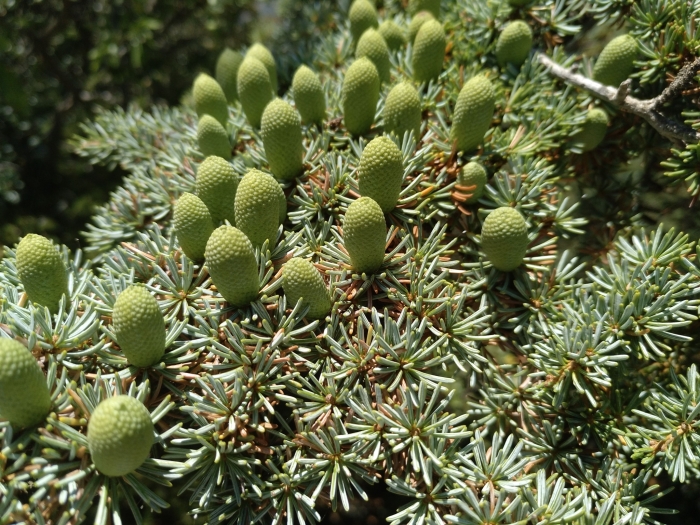Cyprus Cedar
(Cedrus brevifolia)
Cyprus Cedar (Cedrus brevifolia)
/
/

Oisín
CC BY 4.0
Image By:
Oisín
Recorded By:
Copyright:
CC BY 4.0
Copyright Notice:
Photo by: Oisín | License Type: CC BY 4.0 | License URL: http://creativecommons.org/licenses/by/4.0/ | Rights Holder: Oisín | Publisher: iNaturalist | Date Created: 2022-08-01T12:43:39-07:00 |
























Estimated Native Range
Summary
Cedrus brevifolia, commonly known as Cyprus Cedar, is an evergreen conifer native to the high-altitude, dry coniferous and mixed forests of the Troödos Mountains in central Cyprus. It is a medium-sized tree that can reach up to 65 feet (20 meters) in height and 20-30 feet (6-9 meters) in width, with a slow to moderate growth rate. The Cyprus Cedar is characterized by a conical crown that becomes more irregular with age, dense clusters of dark green, needle-like leaves, and barrel-shaped cones that mature to a woody texture.
Cyprus Cedar is valued for its aesthetic appeal, particularly its distinctive silhouette and evergreen foliage. It is often used in parks and large gardens for ornamental purposes, and its wood is known for its durability and fragrance. This species prefers full sun and can tolerate a range of soil types, provided they are well-drained. It is relatively low maintenance but requires space to accommodate its mature size. While it is not commonly reported to have significant disease problems, it can be susceptible to root rot if planted in poorly drained soils. Cyprus Cedar is not known for being invasive when grown outside its native range.CC BY-SA 4.0
Cyprus Cedar is valued for its aesthetic appeal, particularly its distinctive silhouette and evergreen foliage. It is often used in parks and large gardens for ornamental purposes, and its wood is known for its durability and fragrance. This species prefers full sun and can tolerate a range of soil types, provided they are well-drained. It is relatively low maintenance but requires space to accommodate its mature size. While it is not commonly reported to have significant disease problems, it can be susceptible to root rot if planted in poorly drained soils. Cyprus Cedar is not known for being invasive when grown outside its native range.CC BY-SA 4.0
Plant Description
- Plant Type: Tree
- Height: 20-40 feet
- Width: 15-30 feet
- Growth Rate: Slow
- Flower Color: N/A
- Flowering Season: Non-Flowering
- Leaf Retention: Evergreen
Growth Requirements
- Sun: Full Sun, Part Shade
- Water: Medium
- Drainage: Medium, Fast
Common Uses
Low Maintenance
Natural Habitat
Native to the high-altitude, dry coniferous and mixed forests of the Troödos Mountains in central Cyprus
Other Names
Common Names: Short-leaved Cedar
Scientific Names: , Cedrus brevifolia,
GBIF Accepted Name: